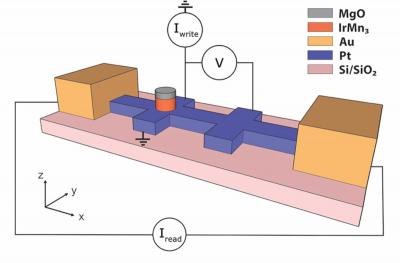Researchers from Northwestern University and the University of Messina in Italy developed a new MRAM memory device composed of antiferromagnetic materials, which could be beneficial for use in AI systems and cryptocurrency mining.

Antiferromagnetic materials (AFM), offer inherently faster dynamics than ferromagnetic materials (FM), have no macroscopic magnetic poles and can be scaled much better. AFM-based memory cannot be erased with external magnetic fields which could prove to be a major security advantage.
In 2020, the research team first demonstrated the electrical writing of information in a silicon-compatible antiferromagnetic memory device. The researchers now improved on the initial design in multiple ways, using a manufacturing-friendly antiferromagnetic material system called iridium manganese (IrMn3). The researchers demonstrated electrical switching of antiferromagnetic IrMn3 using differential voltage measurements.
The new material is a CMOS-compatible non-collinear antiferromagnet, which makes it promising for integration into practical memory/logic chips. The researchers also presented a new device layout and differential measurement method that enables a way to clearly distinguish between switching signals that have magnetic and non-magnetic origins.

